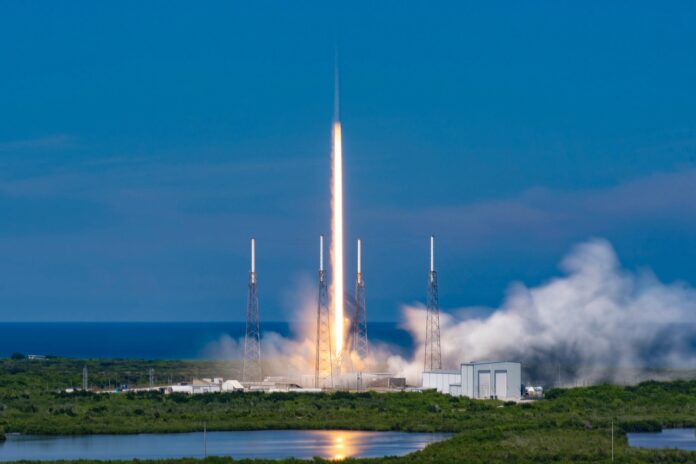Speedcast announced this week a new partnership with broadband satellite service provider Starlink to provide Starlink services to Speedcast’s maritime and enterprise customers. Speedcast said that it’s already been supporting customer trials of Starlink as part of its own integrated services package.
The announcement took place against the backdrop of World Satellite Business Week, a global business space event taking place this week in Paris, France. Speedcast is the first company to sign a distribution deal with SpaceX for enterprise and maritime services, which has, up to now, focused on direct sales instead.
Joe Spytek, Speedcast CEO, said in a statement that adding Starlink to the company’s portfolio will enable Speedcast to add capacity and diverse connectivity as bandwidth demands from remote sites continues to increase. Speedcast already offers sky-based connectivity for its customers using services operating on geosynchronous satellites, but their bandwidth and access is increasingly limited.
Starlink, owned by private space company SpaceX, operates a constellation of Low Earth Orbit (LEO) satellites which provide ground-based users with broadband internet access using a phased array antenna and user terminal for access. Individual consumers must pay a $599 equipment fee, plus $110 recurring monthly fee. The company also offers a tiered service for businesses costing $2,500 for equipment up front, and $500 per month.
Until recently, Starlink required a fixed location to operate. But earlier this year, the U.S. Federal Communications Commission (FCC) granted the company permission to begin offering service to vehicles. Within days, Starlink announced a version of the service designed for maritime use, providing up to 350 megabits per second (Mbps) download speed, for $5,000 per month and a one-time hardware cost of $10,000 for two terminals.
At those prices, it may be easy to dismiss Starlink’s maritime service as the plaything of yacht-owning plutocrats. But Speedcast and Starlink see it differently, as a valuable business connectivity service option for businesses that might otherwise go the route of more expensive and slower geosynchronous satellite connectivity. Examples include the energy sector, on board oil rigs for example, and for merchant vessels operating in international waters too far from terrestrial cellular service to operate.
Starlink announced in August a partnership with T-Mobile US, promising to blanket the U.S. with satellite-based text service accessible to T-Mobile customers using regular handsets, beginning late in 2023. Starlink chief scientist Elon Musk explained that the new service, dubbed Starlink V2, will require new satellites with more sensitive antennas than the current system. SpaceX won’t be able to deploy those satellites until its new Starship heavy payload rocket is ready to launch; the company has seen a few delays with Starship this summer, but recently completed a successful test fire of a prototype at the company’s Texas launch facility, called Starbase.
While Starlink continues to diversify its business with partnerships with carriers like T-Mobile US and Speedcast, the company continues to develop and refine its service. Analysis from Ookla published in June showed that Starlink had dramatically boosted its median speed for U.S. customers compared to the first quarter of 2021. The service’s median speed rose from about 66 Mbps to nearly 91 Mbps in that time, though download speeds suffered significantly during the same period, from 16.29 Mbps to 9.33 Mbps. Ookla also noted that Starlink’s service speed in Europe had increased in every country where it has commercial availability.
Despite the distribution win, Starlink is facing regulatory headwinds with the FCC when it comes to rural broadband service. The company emerged as one of the top winners in the $9.2 billion Rural Digital Opportunity Fund (RDOF) auction, which ended in late 2020. A year and a half later, the FCC denied Starlink’s bid, citing, among other things, the Ookla report which showed degraded service in the U.S. and Canada.
Explaining the decision, FCC chairwoman Jessica Rosenworcel said in a statement, “Starlink’s technology has real promise. But the question before us was whether to publicly subsidize its still developing technology for consumer broadband.”
To that end, the FCC decided that the answer, at least for now, is no. Starlink is appealing the decision.

